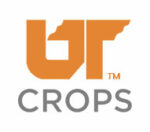LINKS
Trichopoda pennipes (stink bug parsitoid)
Blake Layton (Mississippi State University) and Scott Stewart (University of Tennessee), Department of Entomology and Plant Pathology
General Comments:
Trichopoda pennipes is an important parasitoid of stink bug nymphs and adults. Levels of parasitism can be 90% or greater, but this is highly variable.
Description/Biology:
T. pennipes is a large, showy fly. It is somewhat larger than a housefly and has a bright orange abdomen and a velvety black head and thorax. The legs have a feathery appearance due to a fringe of large hairs. Its eggs are laid on the back of the host, and it is not uncommon to see the dirty white, elongate eggs attached to stink bugs. The hatching maggots bore into the parasitized bug and feed internally. The maggots then exit the stink bug and burrow into the ground to pupate. The parasitized bugs are not killed until the maggots exit, but their egg laying ability is often severely reduced due to damage to their reproductive organs.
Prey (Hosts):
This parasitoid attacks stink bugs, especially the southern green stink bug and several other bugs including the common squash bug.







